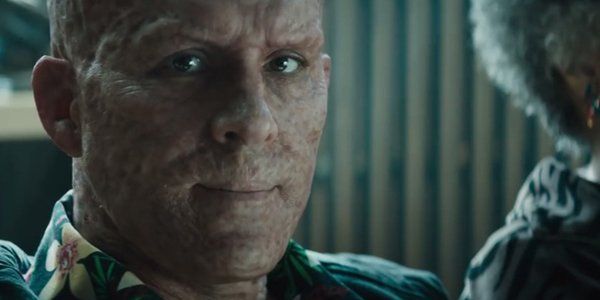

The first film was a love story and this movie needed a real genuine emotional hook.”
#End of deadpool movie full#
That’s the big idea in a movie full of crazy action and fart jokes, but it felt right and earnest. “As you start to peel the onion back, you realize the real villain is all of us because we’re not showing the compassion that he needs. “As a filmmaker, I loved the challenge of not having a conventional villain,” Leitch said.

So we thought, ‘Why feel trapped into the trope of a villain who wants to conquer the world? Why not just have the particular goals of these characters come into conflict?’ ” “We had the evil headmaster, we had Juggernaut, we had Firefist himself as an adult in the future, we had Cable - and sometimes Deadpool is his own worst enemy in some ways. “We decided we had enough people with differing motives butting heads that we didn’t really need a traditional mustache-twirling villain,” says Reese.

REVIEW: Snark conquers all in ‘Deadpool 2,’ a superhero sequel that’s more of the same » In the end, though, it was determined that Deadpool’s relationship with a troubled young mutant named Russell/Firefist (Julian Dennison) would form a more compelling emotional spine than a typical save-the-world narrative involving one all-powerful nemesis. In reality, in early drafts of the sequel’s script, the “Deadpool” team were playing with the idea of setting Deadpool against various potential adversaries, including two well-established Marvel Comics supervillains, Mister X and Black Tom Cassidy (the latter of whom makes a more minimal and fairly inglorious appearance in “Deadpool 2”). When tackling any superhero sequel, the first question is generally, “What baddie will our hero be fighting this time?” Heading into the release of “Deadpool 2,” 20th Century Fox’s marketing campaign suggested that Deadpool’s main adversary would be Josh Brolin’s time-traveling cyborg soldier Cable, whose appearance was teased in the first film’s post-credits coda. ( Final warning: If you haven’t seen “Deadpool 2” yet, stop reading here.)ġ. Given the sky-high expectations this time around, Reese says, “There were definite trepidations.” Heading into the sequel to the original 2016 smash, the core returning team of screenwriters Wernick, Rhett Reese and star and co-writer Ryan Reynolds - who plays the foul-mouthed, fourth-wall-breaking antihero - knew that they couldn’t get away with just replicating the same blend of irreverence, ultraviolence and demented and raunchy R-rated comedy. If this weekend’s massive $125-million box-office haul for “Deadpool 2” is any indication - the second-highest ever for an R-rated title, behind only its predecessor - it seems audiences agree. Warning: This story contains major plot spoilers about “Deadpool 2.”įrom the very beginning, the creative team behind the “Deadpool” franchise has stuck to one very simple rule that guides every decision they make: “We always say, ‘If you can’t do it in another superhero movie, you’d best be doing it in a Deadpool movie,” said screenwriter Paul Wernick.


 0 kommentar(er)
0 kommentar(er)
